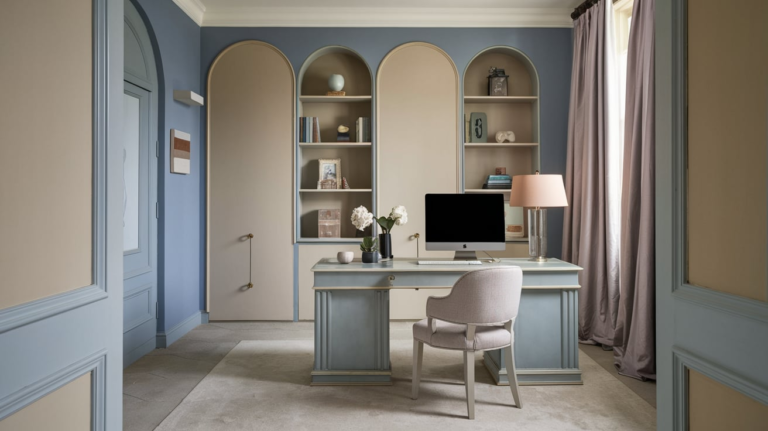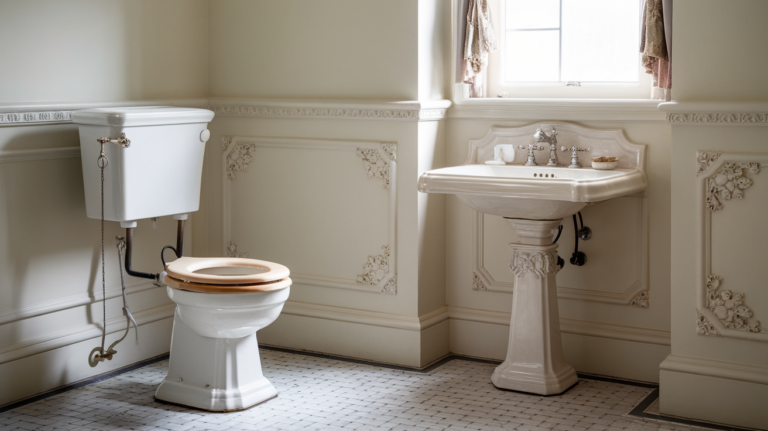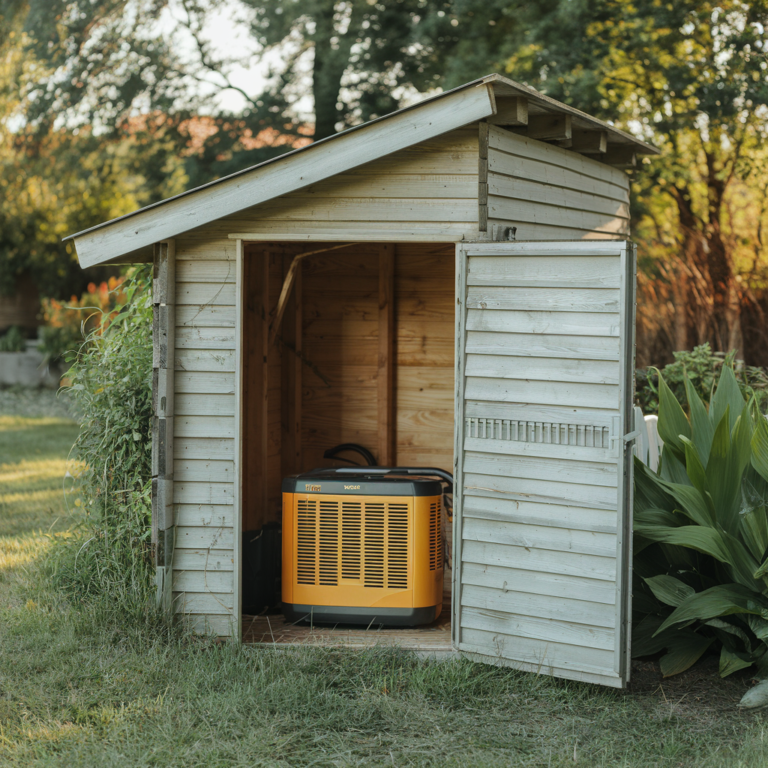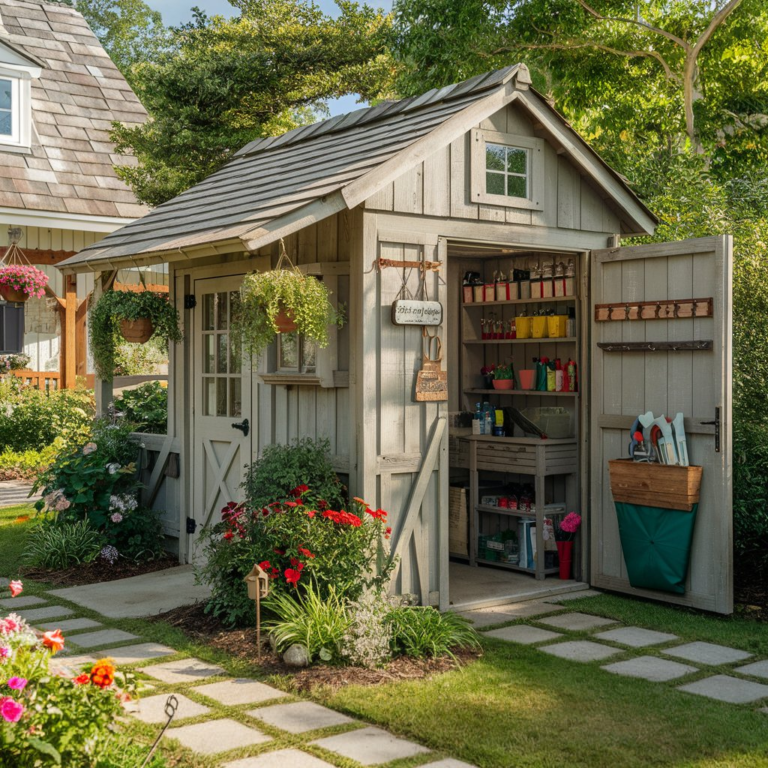24 Kids’ Closet Organization Ideas
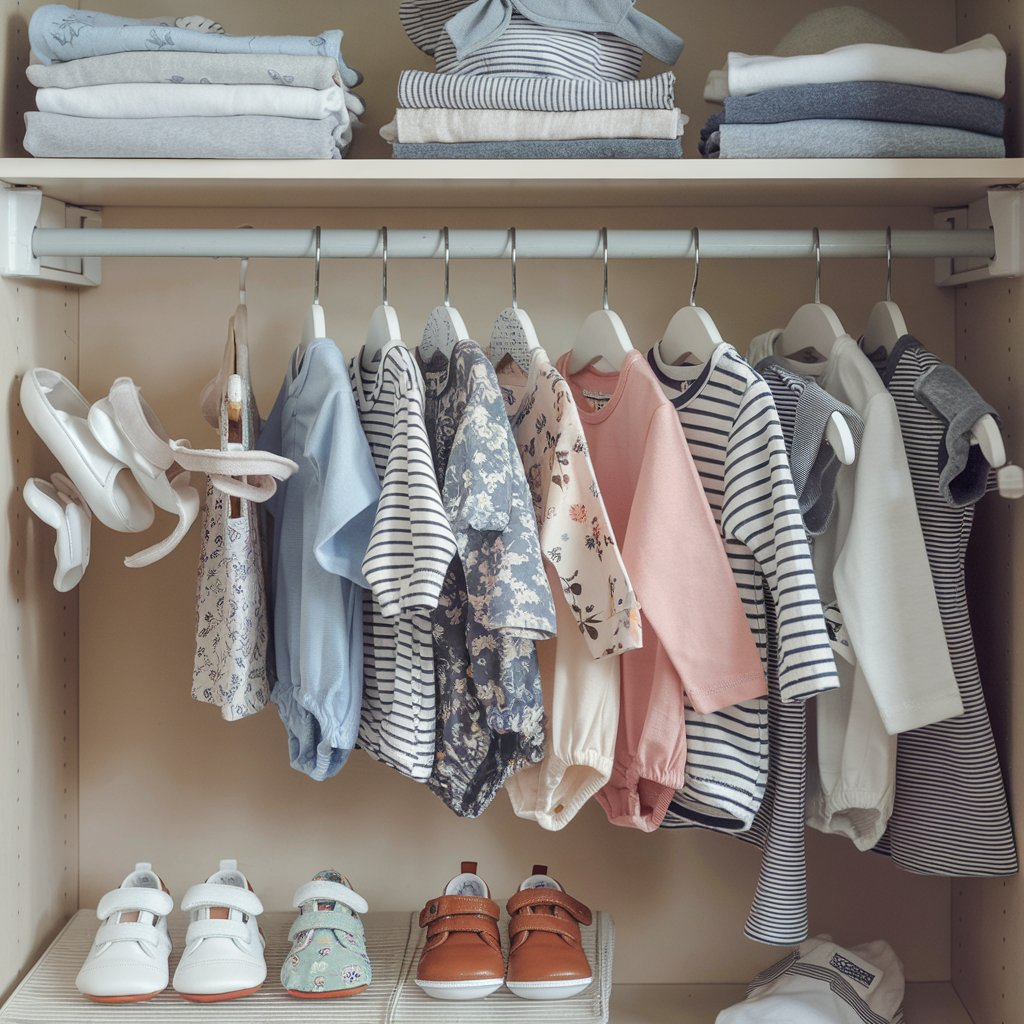
Keeping a kid’s closet organized can feel like trying to contain a whirlwind in a shoebox. Clothes, toys, shoes, and random treasures somehow multiply overnight, leaving you questioning the laws of physics.
But fear not! With a mix of clever strategies, practical storage solutions, and a sprinkle of creativity, you can turn the chaos into an organized haven that both you and your child will appreciate.
1. Declutter Before Organizing

Before diving into fancy bins and labels, purge the unnecessary. Kids outgrow clothes quickly, and keeping too much clutter just adds to the mess. Sort items into three piles: keep, donate, and toss. A rule of thumb—if it hasn’t been worn in six months, it’s time to let it go.
2. Use Adjustable Closet Rods
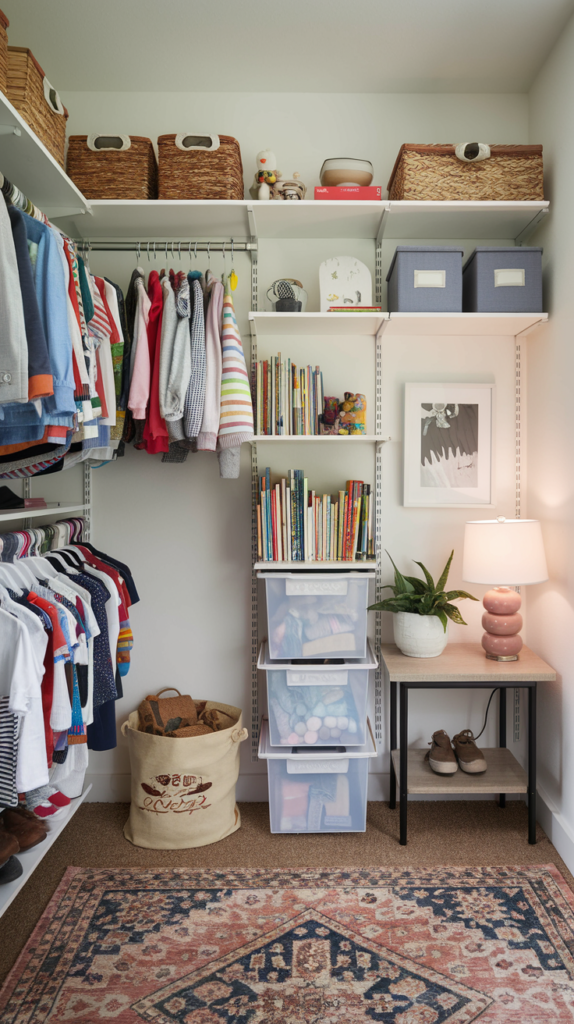
Children grow, and their clothes sizes change faster than we’d like to admit. Installing adjustable rods allows you to modify hanging space as their wardrobe evolves. Double-hang rods can also create more space for easy access.
3. Categorize by Type and Season

Keep daily essentials front and center while storing off-season items in bins or upper shelves. Group similar clothing together: shirts with shirts, pants with pants. This makes morning routines faster and simpler.
4. Label Everything
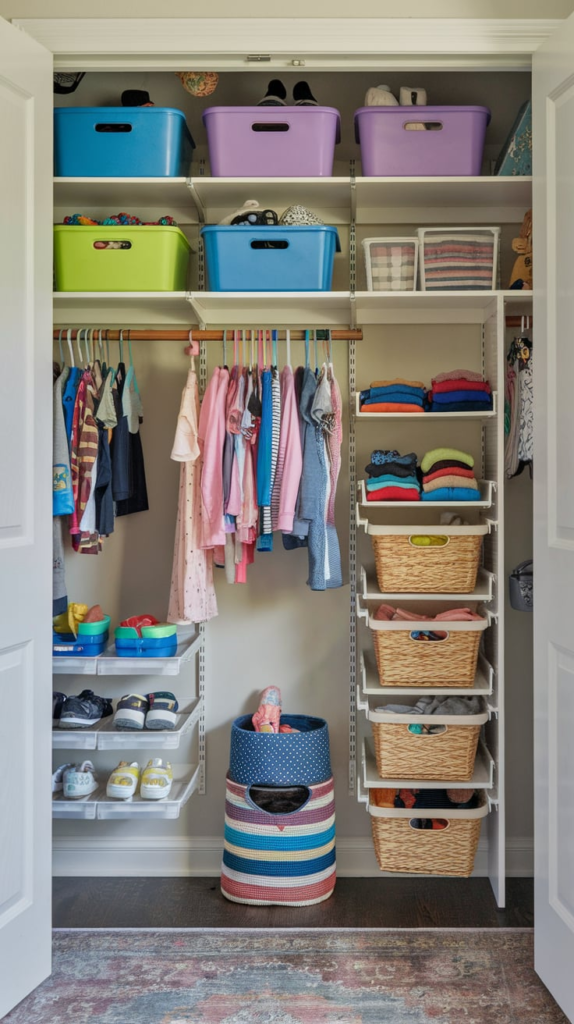
Labels are the secret weapon of organization. Whether you use printed labels, chalkboard tags, or picture-based signs for younger kids, clear labels help maintain order and encourage independence.
5. Use Matching Storage Bins

Uniformity is key to visual organization. Matching storage bins not only make the closet look tidy but also prevent the “random stuff explosion” from taking over. Use clear bins for easy visibility or fabric bins for a neat aesthetic.
6. Install Hooks for Quick Access
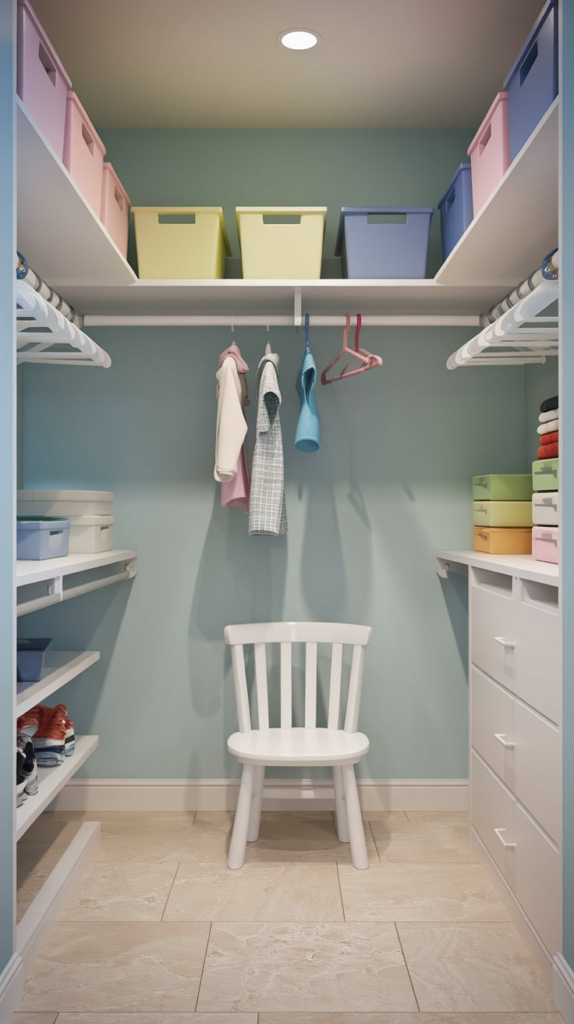
Kids aren’t always great at folding and putting things away. Wall hooks or over-the-door hooks can hold backpacks, jackets, and frequently used items, making them easy to grab.
7. Utilize Hanging Shoe Organizers
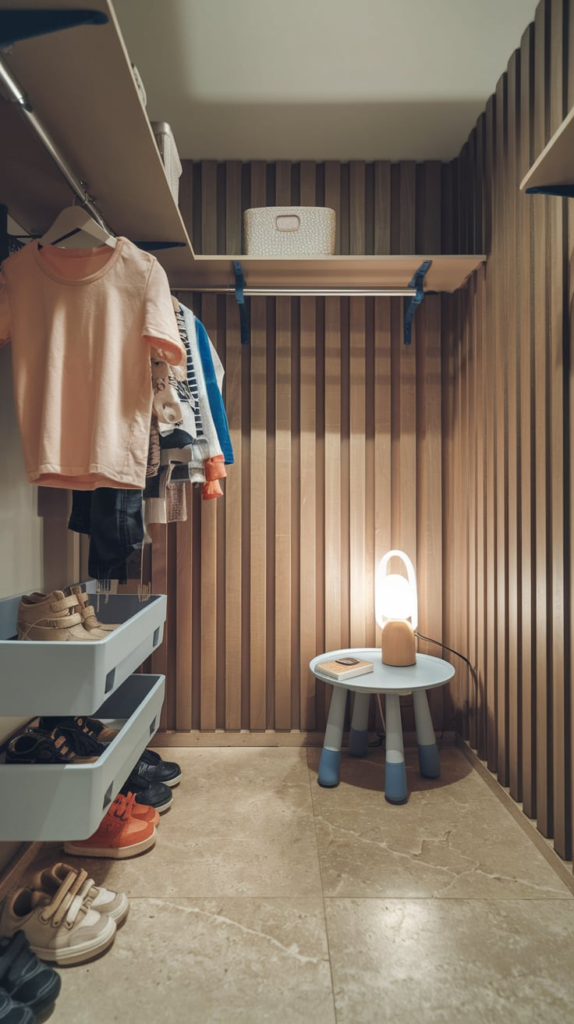
A hanging shoe organizer isn’t just for shoes. It’s a great tool for storing socks, accessories, small toys, or art supplies. Plus, it keeps tiny items from getting lost in the shuffle.
8. Incorporate a Drawer System
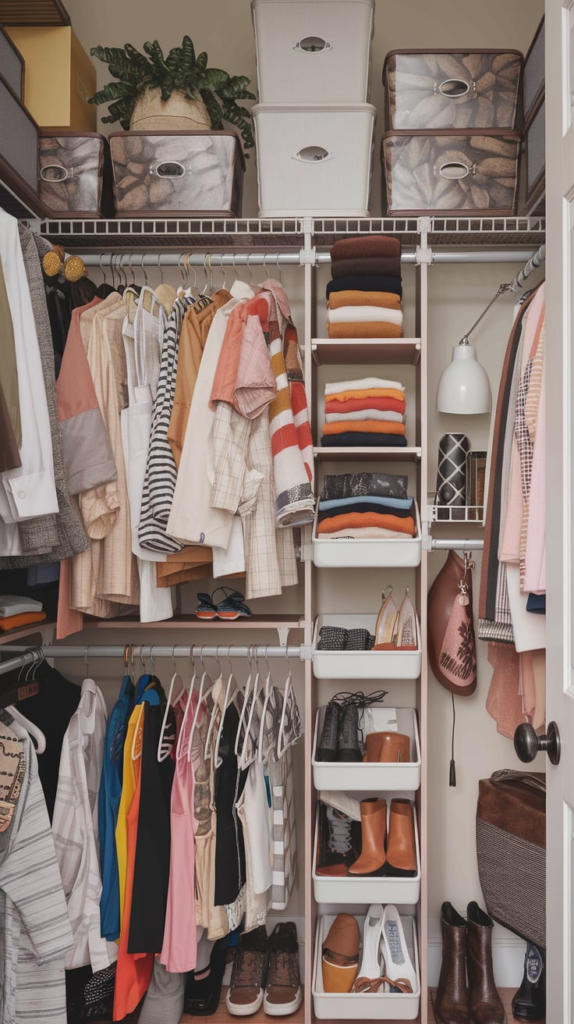
Drawer dividers or small plastic drawer units are lifesavers. Designate drawers for different clothing categories, so everything has a home, reducing the chances of chaotic rummaging.
9. Create a Daily Outfit Station

Mornings can be hectic. Save time by preparing outfits in advance using a small shelving unit or designated drawers. Teach kids to pick out their outfits for the week on Sundays—it’s a game-changer.
10. Use a Pegboard for Accessories
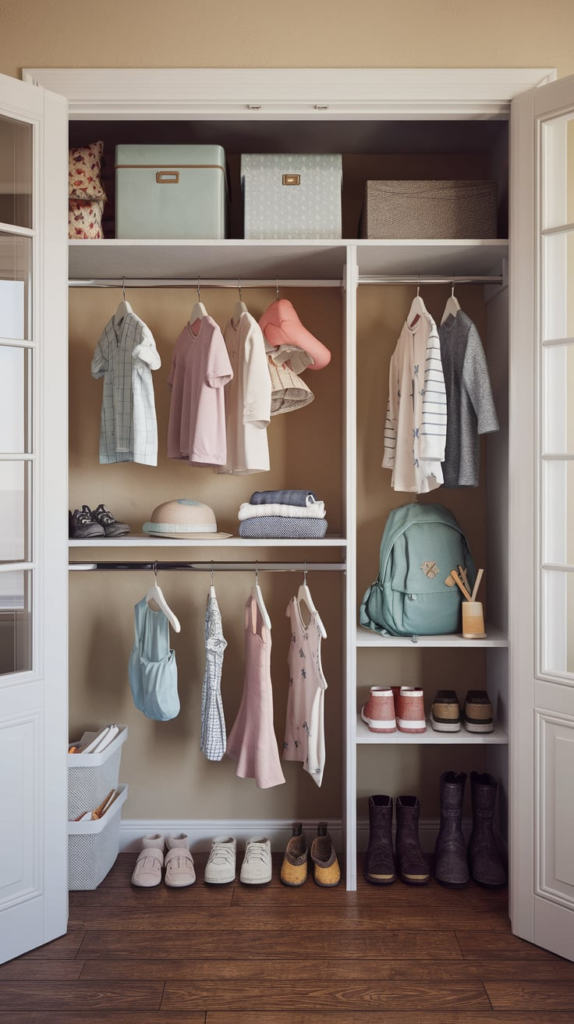
For items like hats, scarves, and headbands, a pegboard can work wonders. Customize it with hooks, bins, or small baskets to make accessorizing fun and organized.
11. Invest in Slim Velvet Hangers

Bulky plastic hangers take up more space than you think. Slim velvet hangers create a sleek look and prevent clothes from slipping off.
12. Make Use of Door Space

The back of a closet door is an underutilized goldmine. Install hanging storage, shoe organizers, or even a whiteboard for reminders and chore lists.
13. Rotate Seasonal Clothes
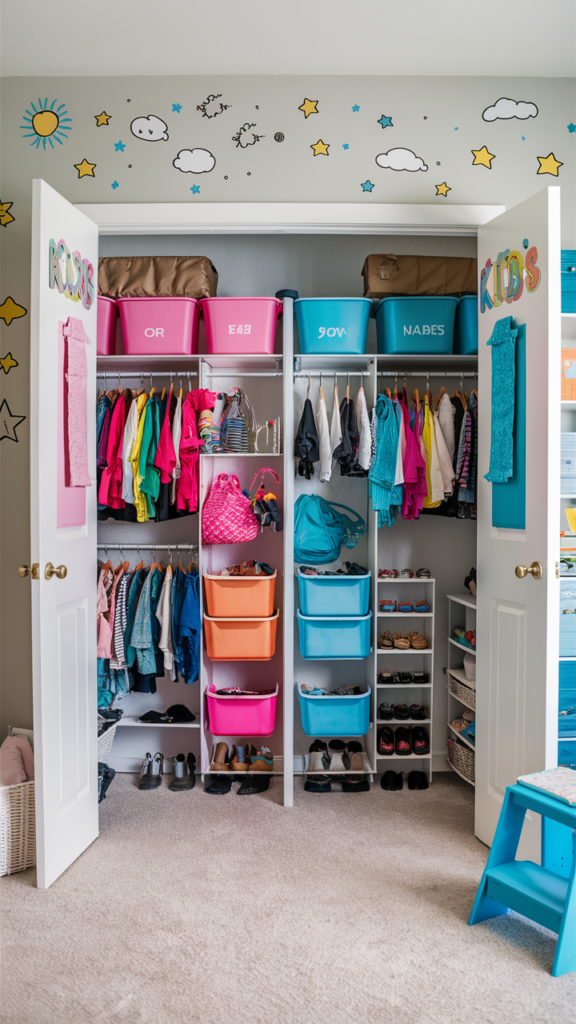
Instead of keeping everything in the closet year-round, store off-season clothes in labeled bins. This frees up space and makes it easier to find current wardrobe staples.
14. Utilize Under-Bed Storage

Closets don’t always have the space we need. Under-bed storage bins can be a secret weapon for overflow clothes, shoes, or keepsakes.
15. Encourage Kids to Maintain Order
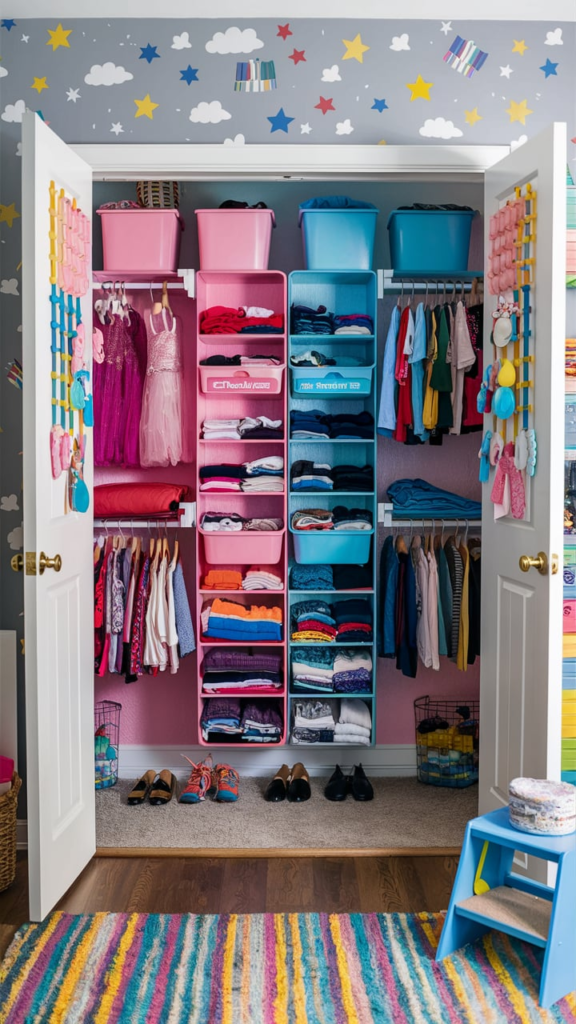
Organization works best when kids are involved. Make it a game—challenge them to put items back where they belong. Reward their efforts with stickers or small incentives.
16. Use Color-Coding
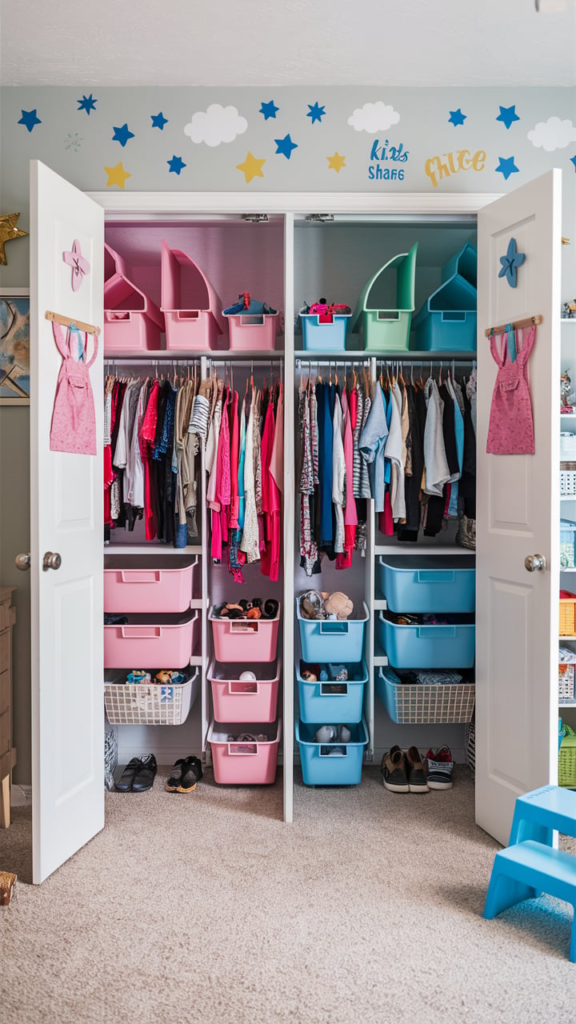
If you have multiple children sharing a closet, color-coding can be a game-changer. Assign each child a color for their hangers, bins, and labels to avoid mix-ups.
17. Install a Small Bookshelf for Extras

A small bookshelf inside the closet can store books, folded clothes, or baskets of accessories. Multi-functional storage is a great way to maximize space.
18. Use a Curtain Instead of Closet Doors
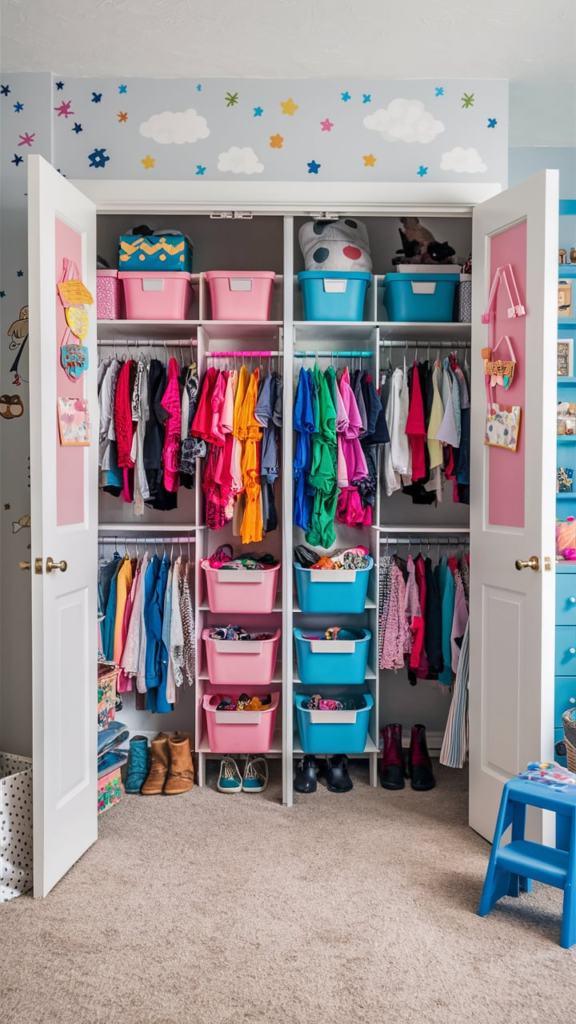
If closet doors are constantly getting in the way (or left open), consider replacing them with a curtain. It provides easy access and makes the room feel more open.
19. Keep a Laundry Basket in the Closet

Encourage good habits by placing a laundry basket inside the closet. It prevents clothes from ending up on the floor and makes laundry day more manageable.
20. Designate a Special Keepsake Box

Kids love keeping small treasures, but they don’t always need to be scattered everywhere. A small keepsake box allows them to store their favorite trinkets in one designated space.
21. Use Tiered Hangers for More Space
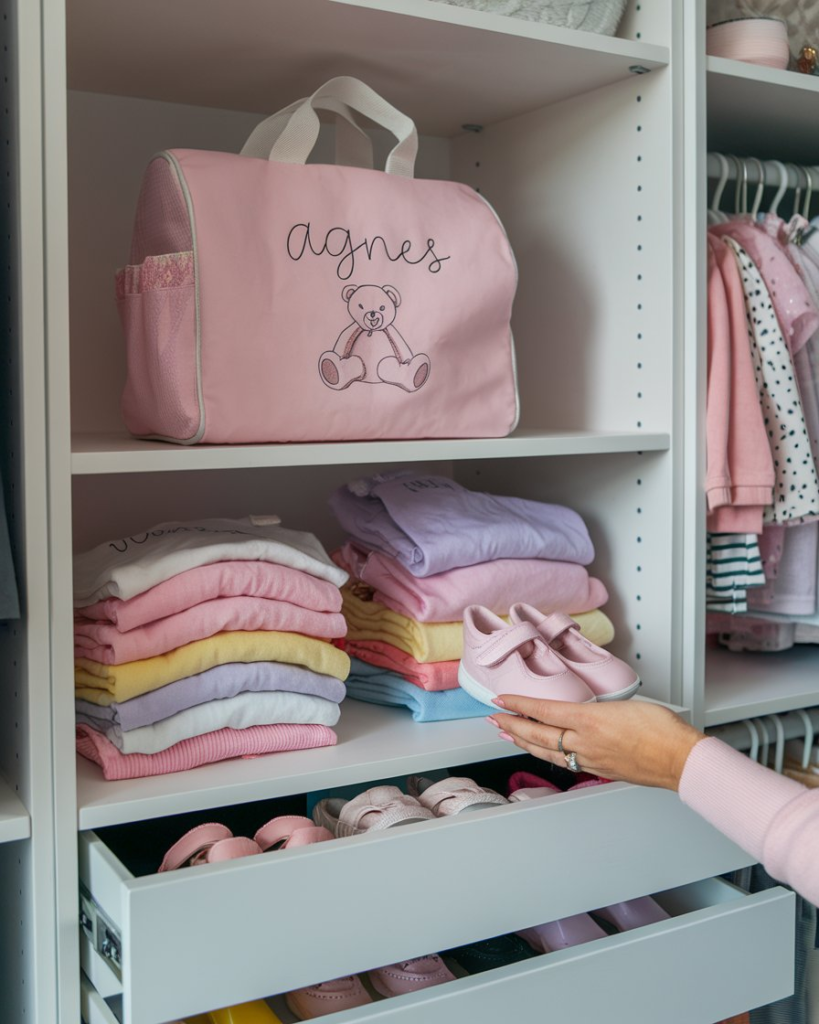
Tiered hangers let you hang multiple items vertically, saving precious rod space. These are especially useful for pants, leggings, or jackets.
22. Store Outgrown Clothes in a Labeled Bin

Instead of letting outgrown clothes pile up, keep a labeled bin in the closet for items to donate or pass down. Once full, sort and distribute.
23. Add a Step Stool for Accessibility

If your child can’t reach shelves or hangers, they’re less likely to put things away. A small step stool empowers them to maintain organization independently.
24. Set a Regular Maintenance Schedule

Closet organization is not a “one and done” task. Schedule a quick tidy-up session every month to keep things in check. Get kids involved to reinforce habits.
Conclusion

Organizing a kids’ closet doesn’t have to be a never-ending battle. With the right systems in place, you can create a space that’s functional, neat, and easy to maintain. Start small, involve your kids, and tweak the setup as they grow.
A well-organized closet not only saves time and reduces stress but also teaches kids valuable lessons in responsibility and organization. Give these ideas a try and enjoy a clutter-free, stress-free closet experience!


